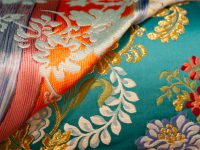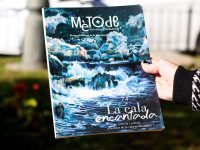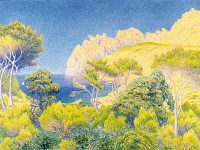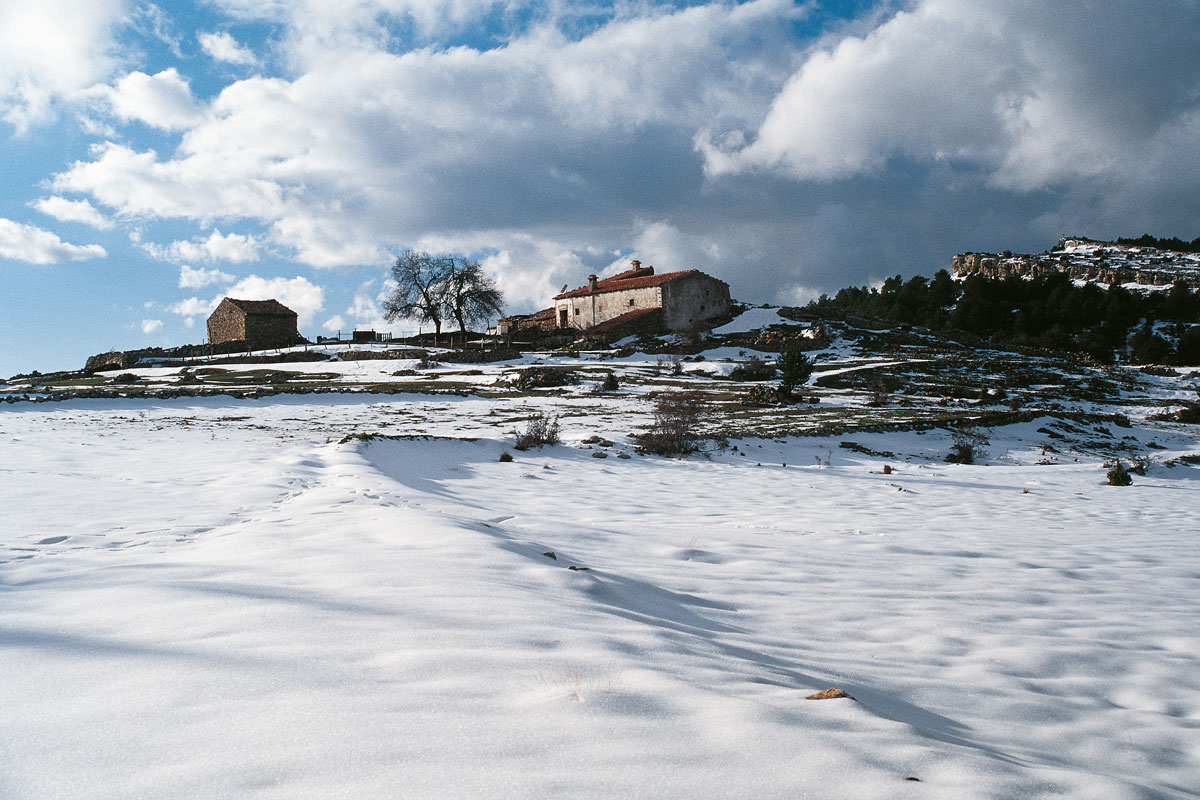
The availability of cooling systems in housing is a modern technological breakthrough. Until the end of the XIX century, cold, which was exploited mainly for therapeutic uses or to refrigerate food and drinks, came from naturally formed ice and snow. To have a cold supply in hot spells it was necessary to collect cold an preserve it in custom-made constructions, like ice or snow boxes and houses, or caves and gullies. All these go to make up the so-called cold landscapes, which are scattered around the Valencian mountainside. Later, cold was man-made, in factories, and later still, it became a domestic feature in the form of fridges and freezers. The cold landscapes were abandoned until recently, but are now recognised to be of national wealth and cultural importance.
Scattered along Mediterranean mountains –is there a Mediterranean without mountains?– we find a peculiar kind of landscapes. Isolated stone buildings: a big round or square well dug in the ground; thick walls with very few openings; sometimes we can still see the roof; sometimes large shallow ponds. They were built between the sixteenth and nineteenth centuries in order to keep snow and ice so they were available for towns and villages. They are the landscapes of winter.
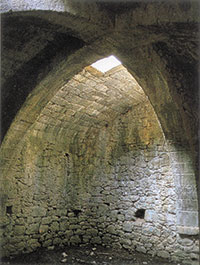
In La Cambreta the masovers (farmers of the time) kept snow in one of the cellars with the better-kept cellars on inland Castellón / Foto: E. Roncero
One may argue that cold has been a problem for humans, almost a ruthless enemy from whom we needed to flee. But the lack of cold has also been –and still is– a nuisance, even a disgrace. In those times and uses, of course, for which science, diet or refinement –culture, in the end– prescribe cold. Medical uses praised since classical antiquity and strongly reintroduced in Renaissance medicine. Incidentally, the first European monograph on the topic was by a Valencian doctor from the town of Xàtiva, Francisco Franco, author of the Tractado de la nieve y del uso della (Treatise on Snow and the Use Thereof, Seville, 1569). Other applications were conservation and transport of food or the pleasure of fresh drinks.
«Commerce of natural cold spread out approximately from year 2,000 b.C. until the transition from the nineteenth to the twentieth century»
How to obtain or produce cold? Physics tells us cold is just the absence of heat. Snow and cold are the main natural products with the ability to lower temperature or, in untrue yet useful words, to transmit their cold, to produce it. In every place where there was not snow and ice all year round, people had to store it during the winter in buildings specifically raised for that function. They are ice or snow boxes and houses, or caves and gullies, generally placed in mountains of mid-latitude areas. During the whole year, and at full speed during the summer, the precious product was brought down to towns and villages, where it was delightfully consumed.
Commerce of natural cold spread out approximately from year 2,000 b.C. until the transition from the nineteenth to the twentieth century, starting point of artificial cold. Thanks to freezing techniques, cold is produced in ice form in industrial facilities in the cities. The onerous discrepancy between the seasons of availability and consumption was eliminated, and the cycle of transport and distribution was significantly reduced. Some may still remember buying ice bars to stock home refrigerators. Cold had been tamed; we were not dependent on climate anymore. Ice and snow boxes were obsolete, as were techniques for its collection, storing, extraction and transport, and these meant less jobs for the population of neighbouring mountains.
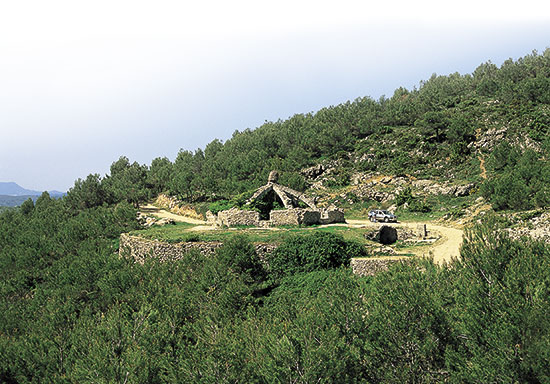
The Great Cellar or Arquejada, located in Agres (El Comtat), became a symbol for the Mariola mountain range and the entirety of Valencian snow storehouses. Its conservation and, maybe, restoration would be the minimum gesture our society should make to pay homage to this heritage. / Foto: J. Cruz Orozco
From the thirties on (or the fifties in Spain) production of cold progressively enters households as increasingly small and cheap fridges. We went from industrial to domestic cold, produced inside our own homes. The cycle of transport and distribution was over; even still, there was not an element to transmit and materialize cold (the ice) anymore. Now we just needed to pay for the machine and the energy for it to work. Cold itself seems to have disappeared. We only feel it when we eat something from the fridge and in the air of an air-conditioned room.
Domestication of cold ended the old trade and covered it in oblivion. It even erased the notion that cold was as much a product as any other. Other characteristic activities of the Mediterranean rural environment have not been so radically banished from our collective memory. Agriculture and stockbreeding, along with their entourage of proto-industries (textile, mills, etc.) and infrastructure (housing, roads, terraces, etc.), have evolved a lot, or even disappeared. But there was a kind of continuity that allows us to read its remains and know their use. The landscapes of the cold, however, have seen their bricks falling, their paths erased and undergrowth covering everything.
The Landscapes of the Cold in Valencia
Valencia always loved cold, and became the top consumer in Spain. At the end of the eighteenth century the Llibre de conte y raó de l’arrendament de la neu y nayps helps us establish the yearly amount of snow that arrived to the city of Valencia in 2 million kilograms. We have to add to this, of course, the snow lost on the way and the undeclared snow. From the seaport in Alicante, snow was exported to Ibiza and the north of the African continent. There were factors favouring consumption, of course: a coastal urban network of refined living; hot summers, lagoons and marshes with related illnesses the treatment of which needed cold…
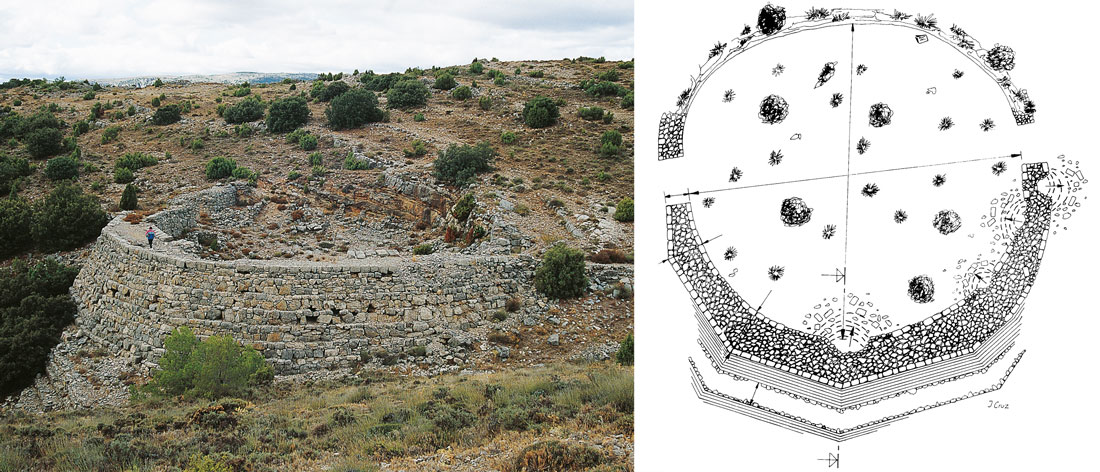
The snowdrift of the Friars is currently the biggest and best kept in the group of La Bellida (Sacañet, Alto Palancia). Its colossal size reminds us of the power of the Carthusian Order of Portaceli in the area. An inscription on the rock reads 1769, probably the year it was built. / Foto: J. Cruz Orozco
Snow supply of cities and towns was subjected to the crown and it was sold to the highest bid. It was also taxed by the town hall and the region government. Some merchants raised good fortunes providing snow to big cities. More than 300 warehouses were built on our mountains. They can be included in two different kinds. Round snow cellars with construction cover and well, and snowdrifts (holes) without neither well nor construction cover, only for high locations.
The network of Valencian iceboxes, according to literature on the subject, is one of the thickest in Europe, with a huge heritage value. Some storehouses are real monuments due to the quality of the building and their size: snowdrifts up to 30 metres in diameter and walls eight metres thick; snow warehouses with 10-metre-wide, 17-metre-deep wells. Some sets can be highlighted because of their interest. Two unusual square boxes “families”: one in Els Ports and El Maestrat; the other around Benigànim (La Vall d’Albaida). The hill of Bellida in Sacañet (Alto Palancia) gathers more than 50 snowdrifts in a unique cultural landscape. The Betic System area (L’Alcoià, El Comtat, La Vall d’Albaida, Marina Alta and Marina Baixa) has some dramatic groups such as the cellars in the Mariola range, Carrascal de la Font Roja or the wholes in the Aitana range. The progressive introduction of ice factories since 1890 in different cities rendered this network obsolete. Until the 1920s, some cellars were still used. What was known as la nevada grossa (the big snowfall) in 1926 marks the end of the activity in our region.
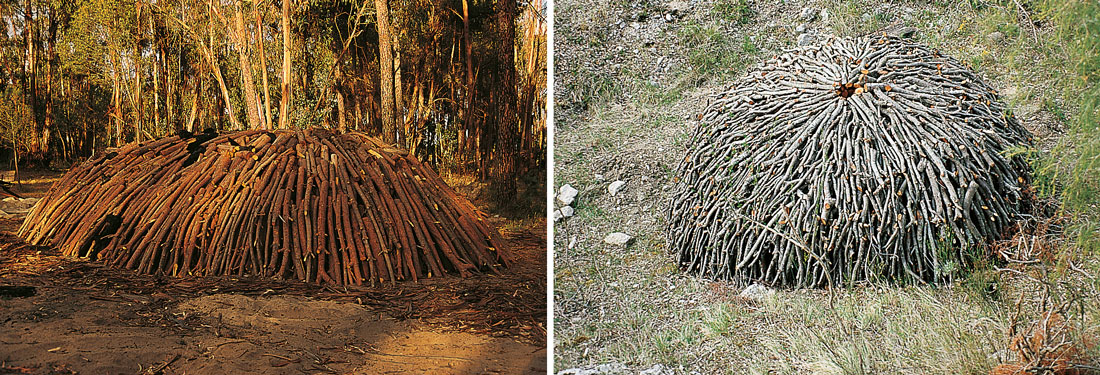
Snow has been one of the natural resources of the Valencian mountain regions, but there were others. The forest allowed the production of charcoal. Cold and heat, water and fire: snow for chill, charcoal to heat, cook or fire clay. / Foto: J. Cruz Orozco
Natural Cold Houses, Cultural Documents
Snow boxes and snowdrifts are part of our heritage because or the way they are built and their landscaping ability, because they make locations distinct and meaningful, sometimes even name them. They are also historical documents, windows to peek into the old trade of snow. They are, in the end, cultural documents to illustrate social processes and encourage thinking.
As other traditional activities the commerce of cold keeps an intimate, compulsory harmony with nature. It uses a natural resource –annually renewed– sustainably. But it depends on climate. There are periods of shortage, supply problems or historical snowfalls filling the mountains with storehouses and labourers, snowfalls such as the one Ferré and Cebrián or Mallol detailed. On March 5 and 6, 1762, around 1,000 people (and 700 horses!) were preparing to work in El Carrascar de la Font Roja and in El Menejador. In a more general scale, we can observe a coincidence of the golden age of modern cold trade and the small “ice age” extending approximately from the sixteenth century to the end of the eighteenth century. It gave Europe a colder, more humid weather than the current one. But we can also see the problems that came with its end, which were probably an incentive for the creation of artificial cold.

Don Miguel Cellar, built in the limit between Bocairent (La Vall d’Albaida) and Alfafara (El Comtat), impressively stands in the Mariola mountain range with appearance of fortress, but it only defended snow from heat and wind./ J. Cruz Orozco
The simplicity of collecting ice and snow during that small ice age was necessary for the commerce to establish, but it was not enough on its own. Popularization of ice and snow consumption was necessary, and two interesting processes affect it. On the one hand, the legitimizing discourse of Renaissance medicine. Public healthiness was argued to justify the use and effort –sometimes important– of towns and cities to organize supply correctly. On the other hand, the use of cold did not escape social mechanisms governing distinction and taste. From palaces and noble households, the trend spread to other social classes.
There are even more key factors for the analysis of the trade. Planhol related the consumption of natural cold with a certain level of economic and cultural development. This would help explain the scarce or non-existent presence of the activity during the modern age in areas like Greece or the Black Sea. But there is more: it also depends on interesting cultural differences. Far East cultures, refined in many aspects, have shown very little interest in cold. In territories with a craving for cold, we observe two main techniques: ice and snow.
Heritage for Melancholics
The landscapes of the cold, as other Valencian rural landscapes, have undergone a process of heritage appropriation. Snowdrifts and other buildings have been recovered from oblivion, introduced in inventories, publications, tourism brochures… and, above all, have been reintroduced into the collective conscience. Therefore, we managed to reverse the sad eighties trend of demolishing and filling up those holes that were considered dangerous. Now they are emptied, cleaned and rebuilt, usually thanks to local actions by the town hall, associations or even individuals. Not only local folk and hikers want to visit the landscapes of the cold. Valencia has now some bibliography: popularization works and even some academic research. In November 2001 the II International Congress on the Traditional Use of Natural Ice and Snow, «The Trade of Cold», was held in Valencia, and offered significant contributions of Valencian researchers.
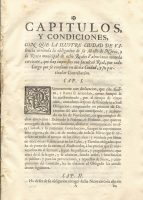
Frontispiece of “Chapters and conditions with which the illustrious city of Valencia leases the obligation of the provision of snow…” They were used during part of the eighteenth century.
The landscapes of the cold are object of study and can even be used in tourism. Knowledge and social use are, actually, two of the pillars of heritage appropriation. The other one is protection. The regional office for culture has a catalogue of snow boxes since 1994, and regularly updates it. There have been petitions to consider some as Bien de Interés Cultural (BIC, Cultural Interest Monument), but to this day only the storehouse of the Mother of God is BIC, as it is included in the complex of buildings of the castle of Xàtiva. As this article was written, we got news of the demolition of the roof of the cellar of the Room (Agres), part of the set of cellars in the Mariola mountain range. An intervention plan in the Great Cellar (Agres), true symbol of the network of cold storehouses, has been inactive for a couple of years. Although humble and disperse, iceboxes and snowdrifts have suffered enough forgetfulness and constitute valuable heritage that the regional government –and Valencian society, ultimately– needs to manage. We must never forget the powerful effects of cold that, as sixteenth century physician Nicolás Monardes said “… removes tremors from the heart and cheers melancholics”.
BIBLIOGRAPHY
Cruz, J. i J. M. Segura, 1996. El comercio de la nieve: la red de pozos de nieve en las tierras valencianas. València. Conselleria d'Educació i Cultura.
Cruz, J. (ed.) (en premsa),: El comerç del fred. Actes del II Congrés Internacional al voltant de la utilització artesanal del gel i de la neu naturals. València. Museu de Prehistòria i de les Cultures de València.
Ferré, J. i J. A. Cebrián, 1993. "L'explotació comercial de les caves de neu a la Serra Mariola. Ss. XVIII-XIX". Alba, Ontinyent: 8, 9-37.
Mallol, J., 1991. Alicante y el comercio de la nieve en la edad moderna, València. Ajuntament de València.
Planhol, X. de, 1995. L'eau de neige. Le tiède et le frais. París. Fayard.


